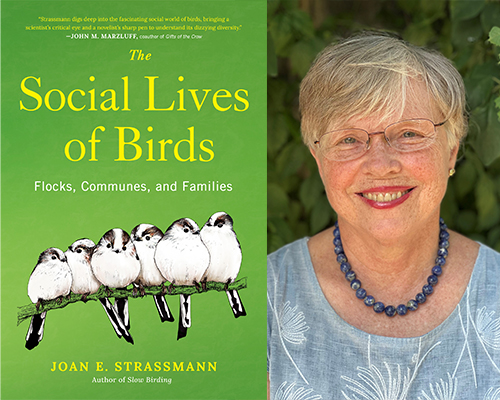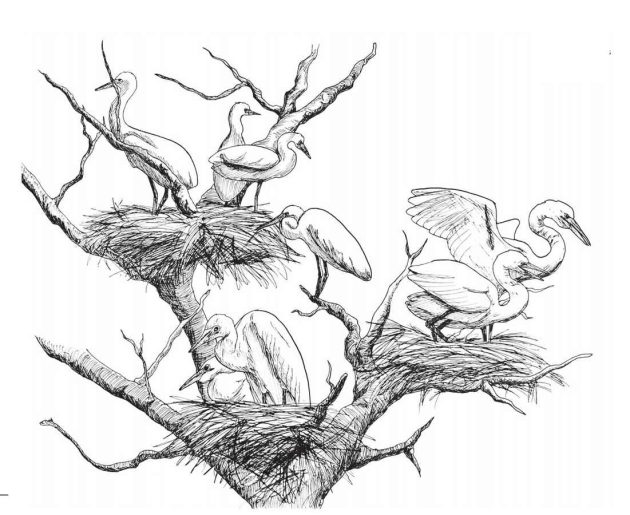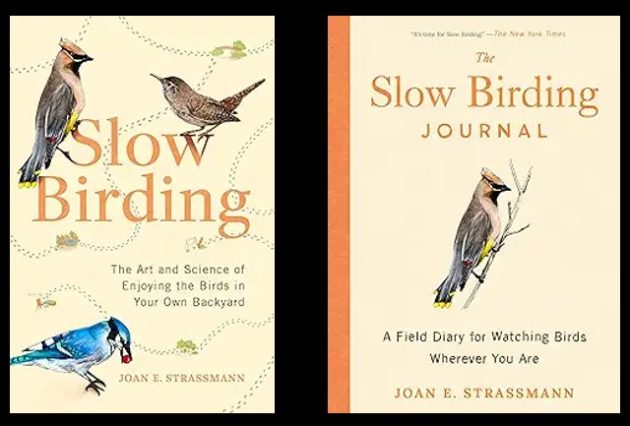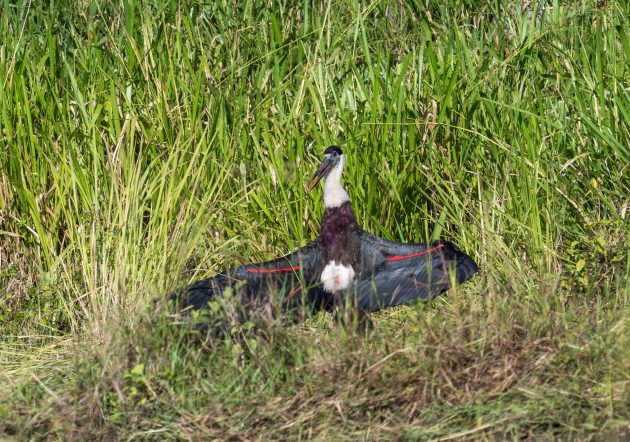PROTECT YOUR DNA WITH QUANTUM TECHNOLOGY
Orgo-Life the new way to the future Advertising by AdpathwayWhen we asked you for an interview via your publicist, you graciously accepted. In fact, your publicist wrote, “Joan is an avid reader of 10,000 Birds and has been for years, so this is very exciting!” What draws you to 10,000 Birds, and what do you especially like (or maybe dislike) about the site?
I have been reading 10,000 Birds for years. I like the personal nature of the posts and their international flavor, with so many from China, for example. If I remember correctly, earlier there were just a few posters and I could feel like I got to know them, posting from Germany, from China, from various other exotic places, from Gibraltar, and my favorite, from Morelia, Mexico. I spent part of my childhood in Mexico and would love to go to Morelia sometime, maybe on a Monday when I can join Paul Lewis on his birding trips. I also like the more recent posts on birding lodges and on birding guides, especially when they are female guides. I view it as a little daily treat to read, and I always learn something.

Was there a particular moment or experience that got you interested in the social lives of birds rather than just their individual behavior?
Birds are social animals, grouping to avoid predators, calling to attract a mate, or tending their young. So I’m not sure what individual behavior would be. Even a Cedar Waxwing eating fruit in a tree usually does it in the company of others. Social behavior has been my passion since I began studying it as an undergraduate at the University of Michigan. My own research has been on social wasps, stingless bees, and social amoebas and bacteria, but social birds work better for teaching. Actually, my interest in avian social behavior goes way back. I can even remember watching bids interact when I was a kid and did not even know what their names were.
Who do you imagine as the main readers of your book?
Social Lives of Birds is written for anyone who wants to learn about birds and get a peek into the lives of ornithologists. You might be surprised at the stories I’ve been told! I do have references, so anyone who wonders where I got the information can look at the notes. It is not a technical book, though. I imagined what it would be like to listen to, and I narrated it myself. I hope readers from all backgrounds enjoy it!
Is there a tension between writing books about birds for a broad audience and publishing scientific papers? How does the academic world view books like yours?
Scientific writing is quite different, though with both popular and scientific writing, it is important to tell a story in an engaging way. I spent years writing blogs, Slow Birding, Sociobiology/So you want to be a biology teacher, and my first blog, Goodbye Houston. With a blog, it is easy to see what works and what doesn’t since feedback is immediate. What is important for all scientists to realize is that we do not know how to write for a broad audience, but we can work hard to learn how to do it.
While writing The Social Lives of Birds, did you come across any bird behavior that especially surprised you?
Birds continue to surprise me, something that is so rewarding. I discovered lots of new things from the sneaky behavior of White-winged Choughs that sometimes only pretend to feed the young to the incubating Pinyon Jays, all covered in snow. Taiwan Yuhinas nest communally and do better in rainy weather because there is less strife. Superb Fairy Wrens in Australia may be the least faithful of all to their mates. Every bird has its secrets, and ornithologists have figured a lot of them out, and here I share them.

Among the many aspects of bird social life, which do you think holds the most promise for future research?
I am just back from the annual American Ornithological Society meeting, held this year in St. Louis, and it would be hard to pick any one question as the best. Some of the big advances have been technical, like the ever-smaller monitors put on migrating birds. Others have been social, like the increasing role eBird plays in research. But there is still no substitute for long-term careful watching like Emily DuVal’s work on Lance-tailed Manakins in Panama. Conservation remains a huge concern, and research from many angles addresses it.
Birders may compare the social lives of birds to those of humans. Where do you think this analogy works well, and where does it break down? Could you share a couple of examples?
Once, people thought that humans could learn from the dedicated care a bird pair gives to their nestlings, but then they discovered that male and female alike were philandering, and the chicks the male tended so tirelessly were often not his own young. Colonial birds like Cliff Swallows sometimes build their nests so close together that one can close in the other entirely. We humans don’t do that, but we do live in ever closer quarters. My own view is that we enrich our lives by loving birds, watching them, drawing or photographing them, and reading about them. I hesitate to take any life lessons from their social behavior.
If you could recommend three species that birders should pay closer attention to for their social behavior, which would you choose?
I think birders should pay closer attention to the birds that are close by. They are easy to watch intensively. Here in northern Michigan, I might pick Blue Jays, Tufted Titmice, and Cedar Waxwings. If I were in Berlin, where I lived for a year, I would pick Long-tailed Tits, Eurasian Coots, and Hooded Crows. If I were in Bengaluru, where I visit regularly, I might choose Common Mynas, Rose-ringed Parakeets, and Black Drongos. Watch what you can see often.
How are bird societies being shaped by environmental pressures such as climate change?
Climate change alters the birds’ relationship to their environment. If their migratory times follow the calendar, they may arrive at their breeding grounds after the big caterpillar flush. There are many very serious impacts of climate change in many forms, too many to go into here. Greatly challenging is habitat loss as humans pave and farm more and more of our planet and chop what remains with countless roads. Birds need our support and our political will to leave something for them.
What do you hope readers of your book will do differently when it comes to birds, birding, or environmental protection after finishing it?
My book shares the stories of social birds. It shows all the ways that birds can be social. I hope readers of the book will understand birds better after reading it and know what to look for.
Finally, is there a question you wish we had asked?
My other books, Slow Birding and Slow Birding Journal, espouse my philosophy of bird watching, which is to focus on what is common at home and watch more deeply rather than running all over the world. We can bird vicariously with the authors of 10,000 Birds while we watch our local birds.

Illustrations by Anthony Bartley taken from “The Social Lives of Birds”.























 English (US) ·
English (US) ·  French (CA) ·
French (CA) ·